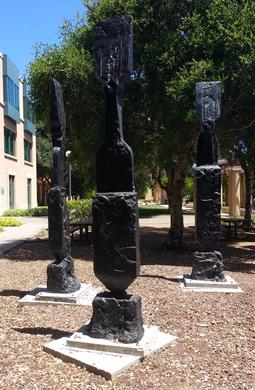The topic of this article may not meet Wikipedia's general notability guideline .(January 2024) |
| Bedford Sentinels | |
|---|---|
 | |
 | |
| Artist | Beverly Pepper |
| Medium | Bronze sculpture |
| Location | Stanford, California, United States |
| 37°25′42″N122°09′56″W / 37.42838°N 122.1656°W | |
Bedford Sentinels is an art installation consisting of three abstract bronze sculptures by American artist Beverly Pepper, installed at the intersection of Serra and Galvez Streets on the Stanford University campus, in Stanford, California, United States. The sculptures are named after alumni Peter and Kirsten Bedford, who donated the pieces to Stanford. [1]